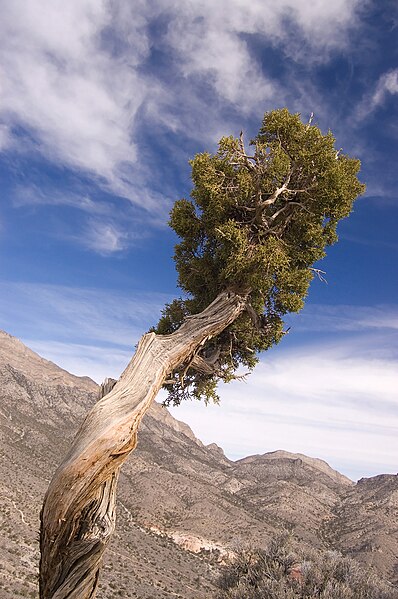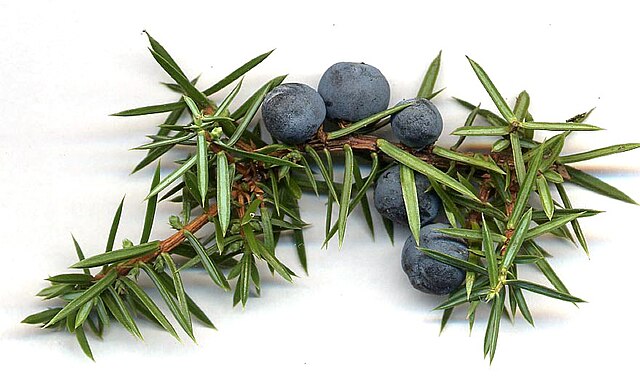A juniper berry is the female seed cone produced by the various species of junipers. It is not a true berry but a cone with unusually fleshy and merged scales called a galbulus, which gives it a berry-like appearance. The cones from a handful of species, especially Juniperus communis, are used as a spice, particularly in European cuisine, and also give gin its distinctive flavour. Juniper berries are among the only spices derived from conifers, along with spruce buds.
Juniper berries are actually modified conifer cones.
Young green and mature purple berries can be seen growing on the same plant.
Dried juniper berries at a market in Syracuse, Sicily
Junipers are coniferous trees and shrubs in the genus Juniperus of the cypress family Cupressaceae. Depending on the taxonomy, between 50 and 67 species of junipers are widely distributed throughout the Northern Hemisphere, from the Arctic, south to tropical Africa, throughout parts of western, central and southern Asia, east to eastern Tibet in the Old World, and in the mountains of Central America. The highest-known juniper forest occurs at an altitude of 4,900 metres (16,100 ft) in southeastern Tibet and the northern Himalayas, creating one of the highest tree lines on earth.
Juniper
Cones and leaves of Juniperus communis
Detail of Juniperus chinensis shoots, with juvenile (needle-like) leaves (left), adult scale leaves, and immature male cones (right)
Juniper needles, magnified. Left, J. communis (Juniperus sect. Juniperus, needles 'jointed' at base). Right, J. chinensis (Juniperus sect. Sabina, needles merging smoothly with the stem, not jointed at base)







